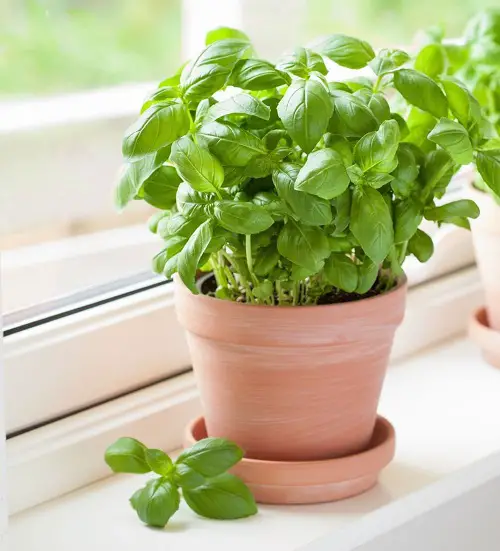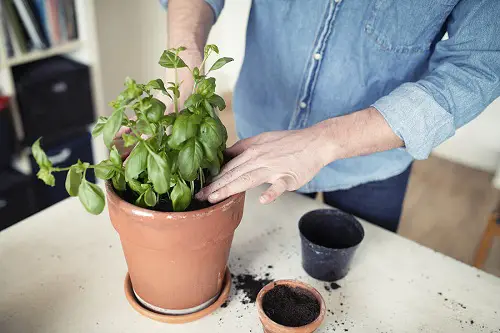You can easily Grow Bigger Basil Leaves using these tips and tricks to get the best flavor for your culinary adventures!

Whether sprinkled on top of a fresh tomato salad or infused in a homemade pesto, bigger basil leaves are a true delicacy for any food lover!
Tips to Grow Bigger Basil Leaves
If you are wondering – how big do basil plants get – well, they can get quite tall, upto 4-5 feet even (as evident from the above picture), if they get the right growing conditions!
1. Pick the Right Variety
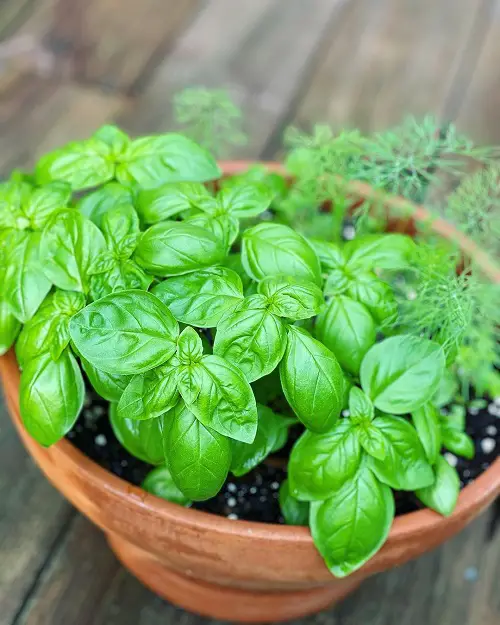
Not every basil has a big foliage spread, so you have to be selective! Go for Mammoth basil, Lettuce leaf basil, Italian large leaf basil, Napoletano basil, and Green ruffles basil – they will offer you mammoth leaves!
2. Choose the Best Location
Basil requires at least six hours of full sunlight daily to thrive and produce large, flavorful leaves. If you’re growing basil indoors, place your plants on a sunny windowsill where they can receive adequate sunlight.
Remember, shade = smaller leaves.
3. Use the Right Type of Soil

Basil prefers a slightly acidic soil pH range of 6.0 to 7.0.
Avoid using 100% garden soil as it can be too dense. Combine 2 parts compost, 1 part coconut coir or peat moss, and 1 part perlite or vermiculite.
Add a handful of worm castings and 2 tablespoons of bone meal to this mix for the best growing medium!
4. Space the Plants Perfectly
Spacing your basil plants properly is an important factor in ensuring that the leaves grow big and healthy. Placing too many plants together will prevent them from getting proper sunlight and air circulation, which may result in smaller leaves.
Make sure it has enough room to grow and spread by keeping it at least 10-12 inches away from the window, wall, or other plants.
5. Go for a Right Pot
If you’re growing basil in containers, choose a pot that is at least 10 inches wide and deep to provide ample space for the plant to grow.
Growing it in a too-small container will limit its growth, which will affect the size of the leaves.
6. Use the Right Fertilizer
A balanced, water-soluble fertilizer with a ratio of 10-10-10 or 20-20-20 is great for boosting the size of the leaves. Dilute it to 1/2 of its strength and use it once in 3-4 weeks.
Be careful not to over-fertilize, as this can lead to excessive vegetative growth at the expense of leaf size.
7. Avoid Watering the Leaves
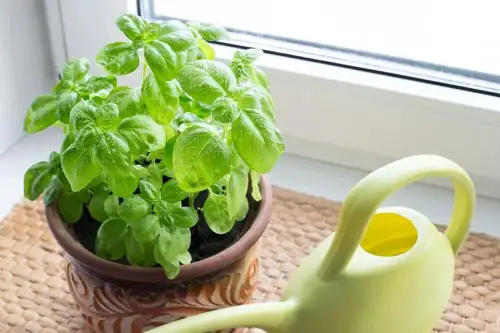
It is important to avoid watering the leaves directly, as it can lead to fungal diseases and damage the delicate surface of the leaves.
Instead, water the soil around the base of the plant to ensure the roots receive sufficient moisture.
8. Control Pests and Diseases

Basil is susceptible to a variety of pests, such as aphids, spider mites, and whiteflies, which can damage the leaves and stunt growth.
- To prevent pest infestations, keep the area around the basil plant free of debris and weeds, and make sure to water the soil and not the leaves.
- If you do notice pests, try to remove them by hand or use an insecticidal soap.
In addition to pests, basil can also be affected by diseases such as fungal infections, which can cause wilting and yellowing of the leaves.
- To prevent fungal diseases, avoid overcrowding the plants, provide good air circulation, and avoid watering the leaves.
9. Don’t Underwater
Overly dry soil tricks the plant into thinking that it is about to complete its life, and then it starts to produce more seeds.
A blooming plant will redirect its energy into developing more flowers, which will result in smaller leaves.
Note: It is equally important not to overwater the plant as it will also result in smaller leaves. Water the plant ONLY WHEN the topsoil feels a little dry to the touch.
10. Keep Deadheading
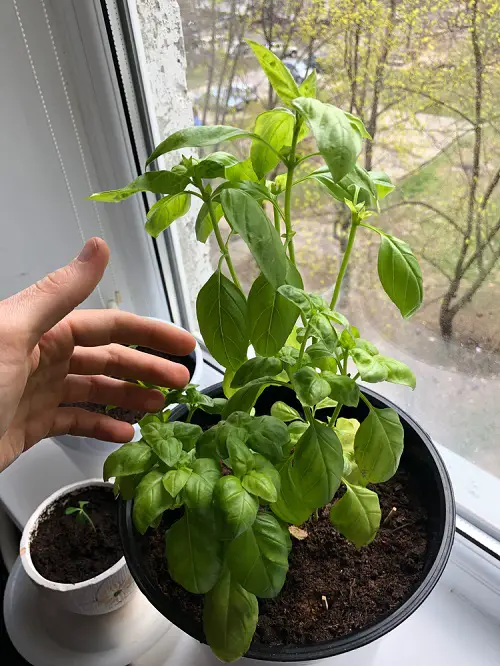
Deadheading basil plants is an important process to help them to produce better and bigger leaves.
- Remove spent flowers (when you spot them) from the plant by pinching or snipping them off. This encourages the plant to focus its energy on producing leaves rather than flowers.
- If the plant is allowed to produce flowers, the leaves can become smaller, and the flavor can become weaker. Deadheading also helps to keep the basil looking neat and tidy.


